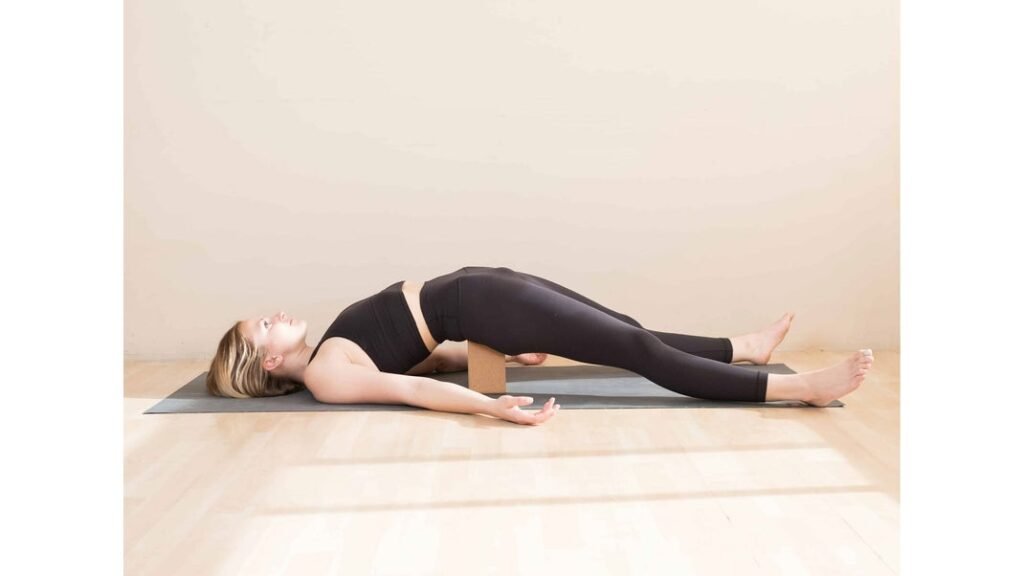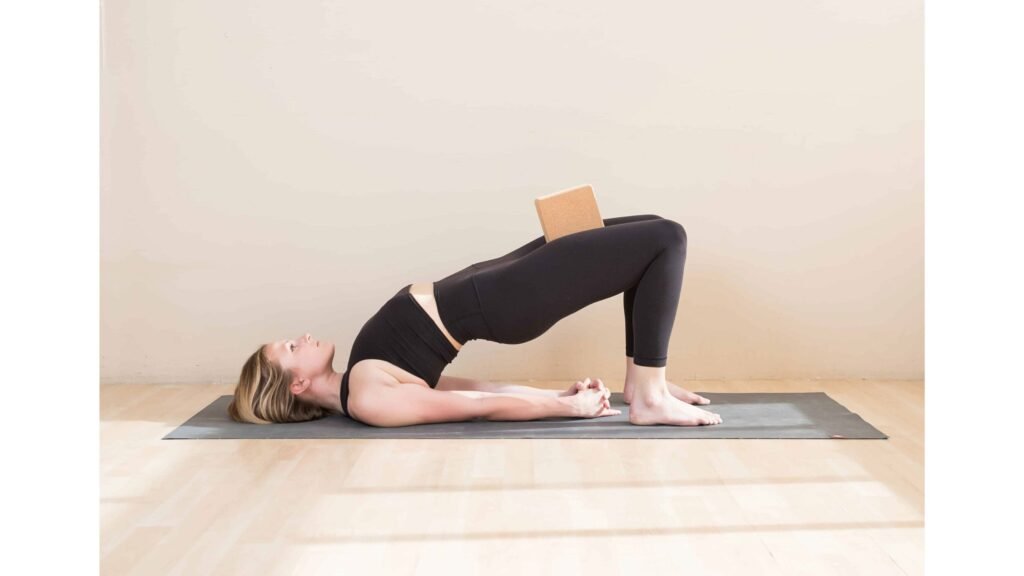Bridge Pose (Setu Bandhasana)

Bridge Pose, also known as Setu Bandha Sarvangasana, is a reclining backbend and chest-opening yoga pose. This yoga asana (posture) involves raising the hips and pressing the arms into the mat to form a “locked bridge” of your body. Bridge Pose in Yoga can be used to warm up for deeper backbends or as a restorative pose with a block.
In Sanskrit, setu means “bridge,” sarva means “all,” and anga means “limb.” Setu Bandha Sarvangasana demands you to form a bridge with your body using all of your limbs.
Yoga Bridge Pose allows yogis to receive the advantages of an inversion without having to be physically upside-down.
How to do Bridge Pose (Setu Bandhasana)
- Lie down on your back in the centre of the mat, knees bent, legs and feet parallel, hips apart.
- On an inhale, lift your hips and press the backs of your shoulders and feet against the floor.
- Press the inner feet down actively and keep both the thighs are parallel to each other and lengthen your tailbone toward the backs of your knees.
- Interlace your fingers underneath you, draw your shoulder blades deeper into your upper back and keep your neck neutral
- Stay for 5 to 15 breaths
- To finish, exhale, release your hands, and lower to the floor.
Beginners’ tips
Place a block between your knees and keep it there firmly while you rise and descend your hips to stimulate your inner thighs and glutes.
Benefits of the Bridge Pose (Setu Bandhasana)
- Stretches the front of the body, including the thighs, hips, abdomen, and chest.
- Strengthens the back muscles
- Improves digestion
- Opens up the lungs and reduces thyroid problems
- Calms the brain, reducing anxiety, stress and depression
Precautions of Bridge Pose (Setu Bandhasana)
- Avoid doing this pose if you are suffering from neck and back injuries.

Online Yoga Course for Beginners
Bridge Pose Variations and Modifications
If you are struggling with bridge pose, you can use bridge pose variation with blocks and some other props. These props can help you tune in to your body and make connections in a variety of ways.

Variation 1: Supported Bridge Pose (Block under sacrum)
How to do it
- Begin by lying on your back with your feet on the ground and knees raised, feet and knees parallel.
- Press the inner edges of your feet to raise your hips.
- Place a block on underneath your sacrum.
- Roll down your inner thighs and stretch your tailbone toward the backs of your knees.
- Push your shulder toward the floor and keep your neck neutral
- Hold for 5–15 breaths.
- To finish, remove the block from underneath you and gently loweer down.
Block benefit
- Releases hip flexors and low back
- Supports extension of the spine

Variations 2: Bridge Pose (Block between thighs)
How to do it
- Begin by lying on your back with your feet on the ground and knees raised, feet and knees parallel.
- Press the inner edges of your feet to raise your hips.
- Place a block between the inner thighs.
- Squeeze block between your thighs as you lift the hips.
- Press the feet into the mat and lengthen your tailbone toward the legs.
- Draw your chest toward your chin by placing your hands on the mat or interlacing your fingers beneath your low back.
- Hold for 5–15 breaths.
- To come down, gently lower and rest your back on the mat.
